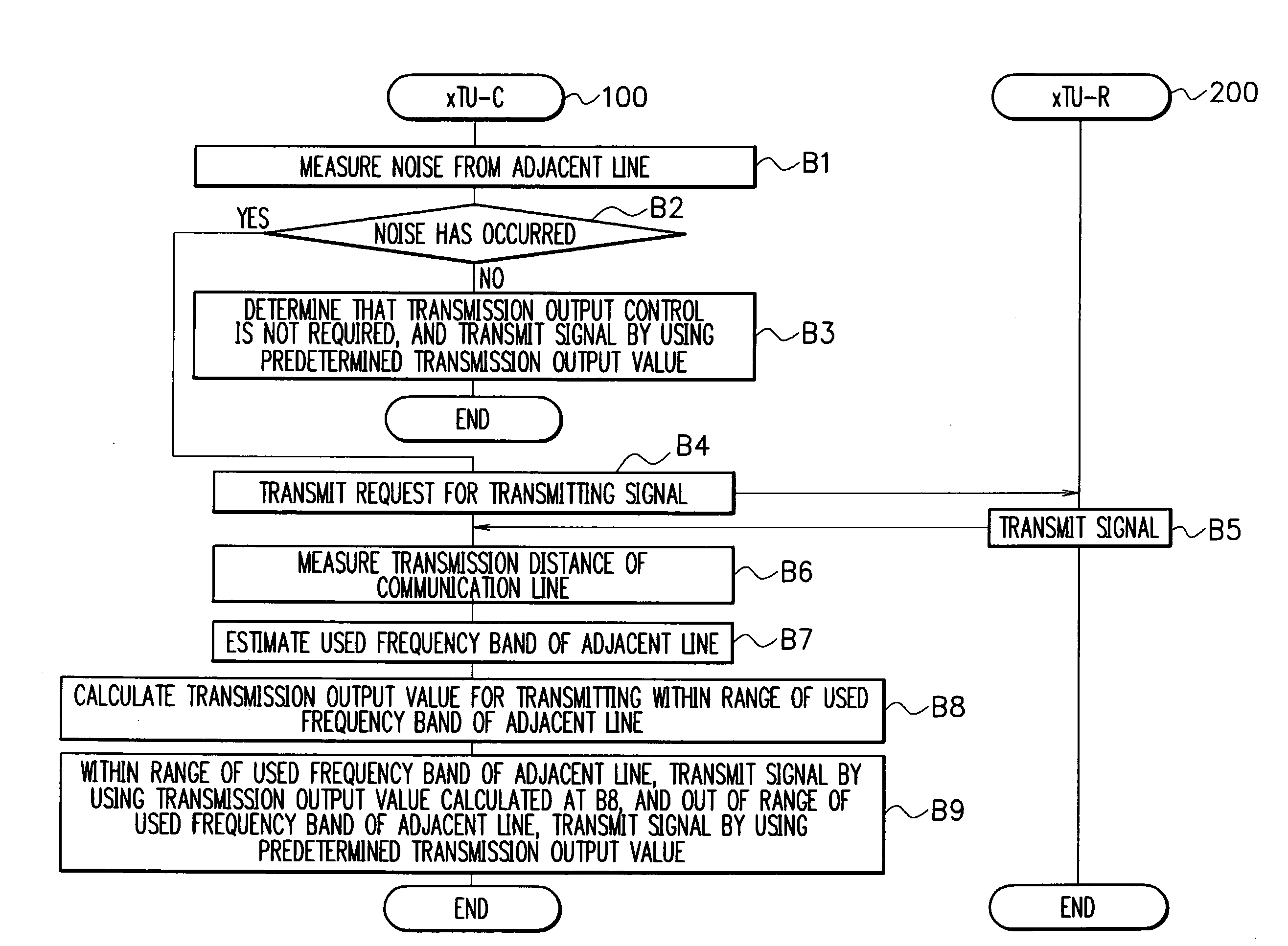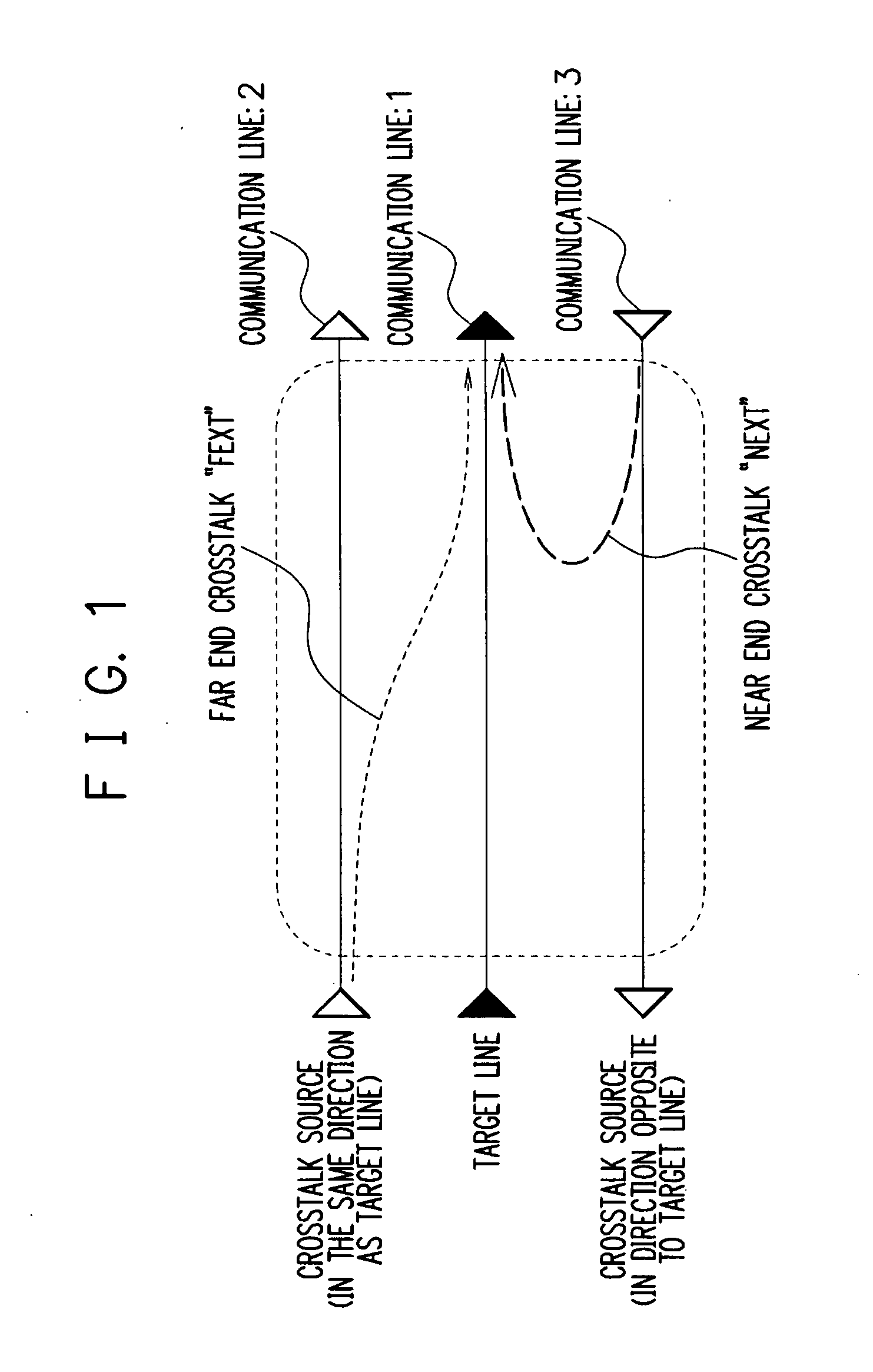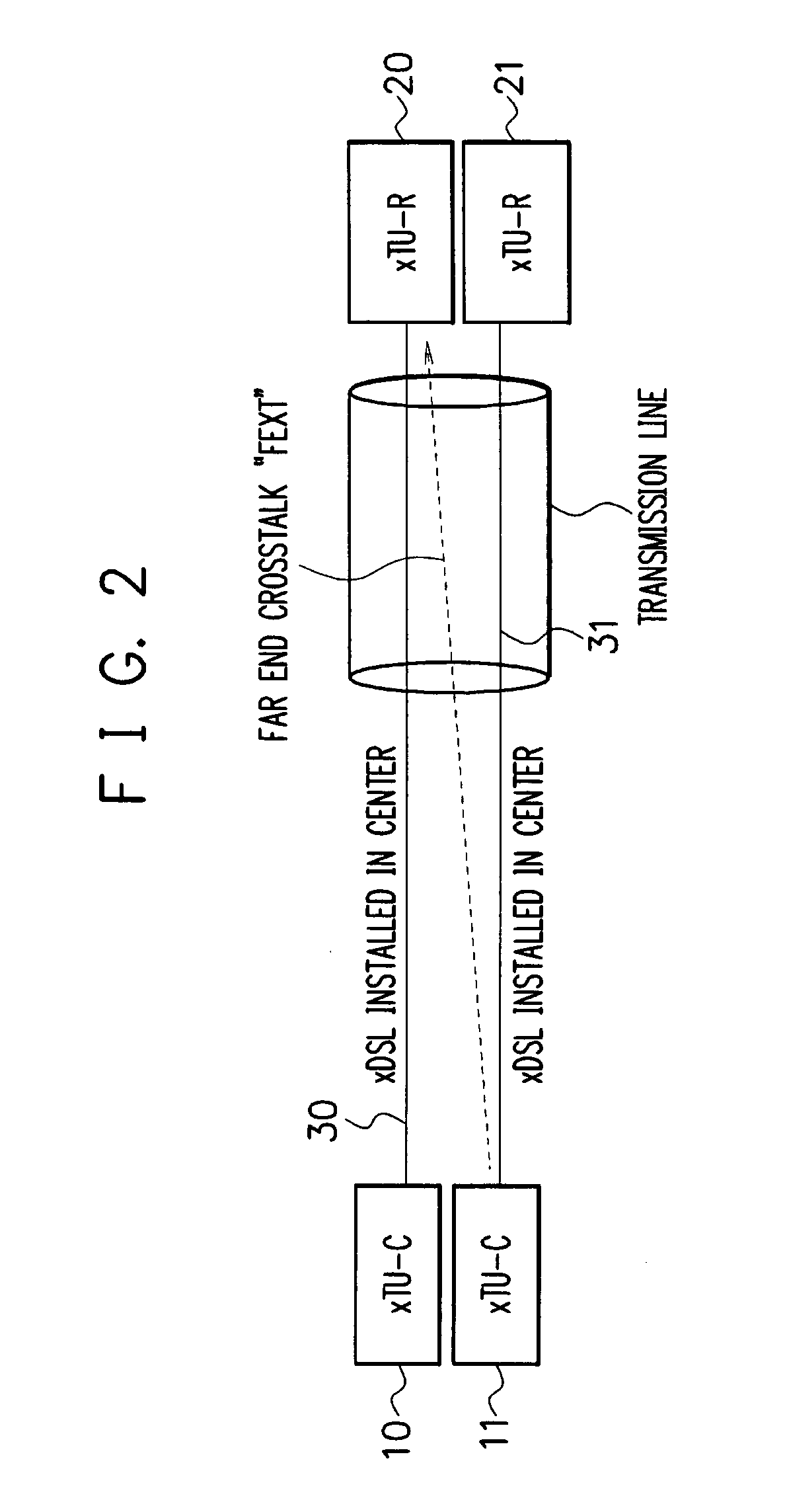Transmission output control apparatus, multicarrier transmission system, transmission output control method and transmission output control program in computer-readable storage medium
- Summary
- Abstract
- Description
- Claims
- Application Information
AI Technical Summary
Benefits of technology
Problems solved by technology
Method used
Image
Examples
second example
[0133]Next, a second example will be described.
[0134]In the multicarrier transmission system in the first example, as shown in FIG. 5, the transmission distance of the communication line (300) is previously measured at the xTU-R (200) side (step S1), and the above described measured transmission distance of the communication line (300) is transmitted to the xTU-C (100) side (step S2).
[0135]In a multicarrier transmission system in the second example, as shown in FIG. 10, if the xTU-C (100) determines that the noise equal to or more than the predetermined threshold has occurred on the adjacent line (400) (step A2 / Yes), the xTU-C (100) transmits a request for measuring the communication line (300) to the xTU-R (200) side (step A4). Then, the xTU-R (200) is characterized in that if the xTU-R (200) receives the request for measuring the communication line (300) from the xTU-C (100), the xTU-R (200) measures the transmission distance of the communication line (300) (step A5) and transmits...
third example
[0138]Next, a third example will be described.
[0139]In the multicarrier transmission system in the first and second examples, the transmission distance of the communication line (300) is measured at the xTU-R (200) side, the above described measured transmission distance of the communication line (300) is transmitted to the xTU-C (100) side, and the xTU-C (100) obtains the transmission distance of the communication line (300).
[0140]As shown in FIG. 11, a multicarrier transmission system in the third example is characterized in that the transmission distance of the communication line (300) is measured at the xTU-C (100) side (step B6), and the xTU-C (100) obtains the transmission distance of the communication line (300).
[0141]Thereby, since this example omits the measurement of the transmission distance of the communication line (300) at the xTU-R (200) side, a process at the xTU-R (200) side can be simplified.
[0142]Hereinafter, with reference to FIG. 11, a series of processing opera...
PUM
 Login to View More
Login to View More Abstract
Description
Claims
Application Information
 Login to View More
Login to View More - R&D
- Intellectual Property
- Life Sciences
- Materials
- Tech Scout
- Unparalleled Data Quality
- Higher Quality Content
- 60% Fewer Hallucinations
Browse by: Latest US Patents, China's latest patents, Technical Efficacy Thesaurus, Application Domain, Technology Topic, Popular Technical Reports.
© 2025 PatSnap. All rights reserved.Legal|Privacy policy|Modern Slavery Act Transparency Statement|Sitemap|About US| Contact US: help@patsnap.com



